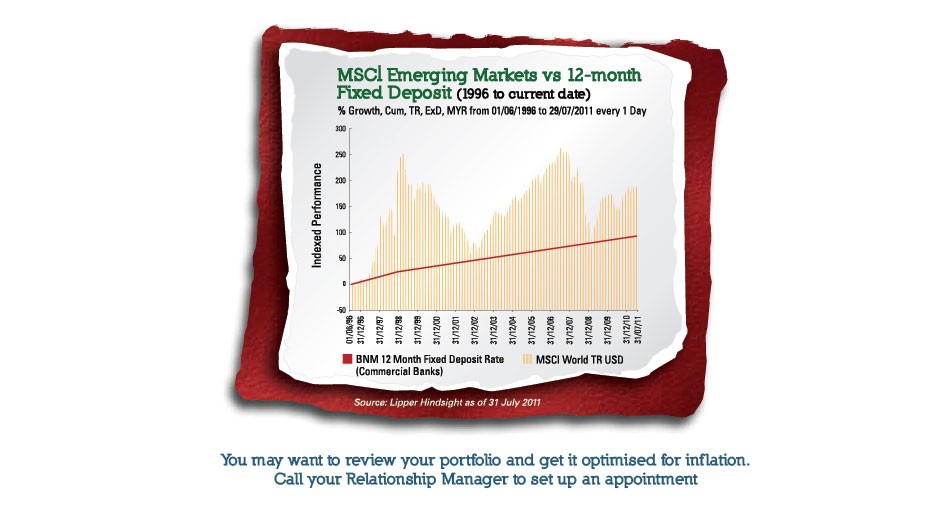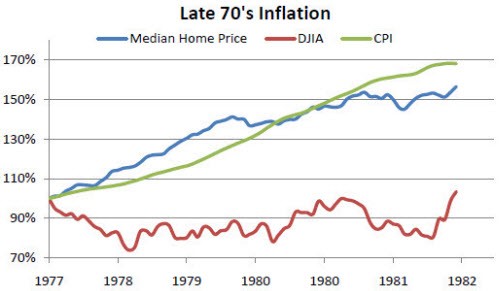Smart Investments That Outpace Inflation
Post on: 13 Июнь, 2015 No Comment

In today’s economic climate, many consumers are questioning the wisdom of conventional savings and investment strategies. The fallout from the subprime lending crisis and subsequent liquidity crunch have hit financial and non-financial stocks hard, with the major stock indexes experiencing notable declines in recent weeks. The Federal Reserve has been lowering short-term interest rates in an effort to restore liquidity and confidence to financial markets, and reduce the odds of a recession. But economy-boosting rates in the current mixed economic environment have caused many investors to worry about inflation. While the typical investor has not abandoned traditional investment vehicles, many are seeking alternatives to add additional inflation protection to their portfolios.
The Federal Reserve reduced both the federal funds target rate and the discount rate by half a point at the September 18, 2007 Federal Open Market Committee (FOMC ) monetary policy meeting, and lowered the benchmark fed funds target rate again in October. These actions have added to investors’ concerns about price stability; inflation concerns are validated by the rising cost of numerous bellwether commodities, like crude oil and gold.
While core inflation rates remain relatively low, headline inflation has been rising at a disquieting rate. Core inflation doesn’t factor in prices for food and energy, which are economic staples, and therefore fails to reflect the real price increases that are pinching the average American consumer. Petroleum-based energy prices alone have increased substantially in 2007. From January to September, 2007, grocery store prices have risen by an annual rate of 6.7 percent, while dairy products jumped 17.7 percent. Meanwhile, the Federal Reserve may cut interest rates again on December 11, 2007, which would place additional inflationary pressure on the U.S. economy.
While finding smart investments that outpace real inflation is certainly more challenging in the current economic climate, there are many profitable opportunities available in both traditional and non-traditional financial markets. Of course, the best investment strategy depends heavily upon the individual circumstances of each investor; factors such as age, income, goals, and risk tolerance play key roles.
Though the stock market hasn’t been performing well in recent weeks, most financial advisers agree that one of the best ways to keep money growing faster than inflation is by investing in equities. Despite recent volatility in the stock market, overall returns have remained strong over the past 22 months. From December 30, 2005 to November 9, 2007, the Dow Jones Industrial Average (DJIA ) gained an impressive 21.7 percent, the S&P 500 advanced by 16.46 percent, while the NASDAQ Composite Index added 19.16 percent. Both the DJIA and the S&P 500 closed with record highs on October 9, 2007.
While stock market investments involve risk, a conservative, long-term approach to investing can reduce the chances of capital loss significantly. Mutual funds are very popular because they consistently grow at a respectable rate, and they generally aren’t as risky as investing in individual stocks. There are many different mutual funds available on the market, and each fund has it’s own unique risk potential: some offer better returns with the downside of being riskier, while others offer moderate returns, with the upside of being relatively safe.
Bonds are investments that can offer a bit more security to the investor who is leery of stock market risk. Bonds generally have an inverse relationship with interest rates: as the cost of a bond rises, the yield that the bond offers falls. In most cases, a fixed interest rate is paid to the investor throughout the life of the bond in exchange for the use of the principal by the corporation, municipality or government agency that issued the bond. Risk levels vary with bonds, and can be determined by ratings, which range from AAA bonds, the most secure, down to junk bonds, which are quite risky, but offer very attractive returns. An investor can balance out risk by investing in a bond fund.
For federally-insured security in investment, CD’s, or Certificates of Deposit, and Money Market accounts are available. These investments are particularly good for those who have a low tolerance for risk, like investors nearing retirement age or those on a fixed income. Low risk is the key for these investors, as they lack the time to recover from potential losses that can occur with higher-risk investment vehicles. While returns on these investments are lower than the average investment in stocks or bonds, they invariably offer better rates than simple savings accounts, and are usually the safest investment vehicles that also tend to stay ahead of inflation.

An innovative area that has been attracting more interest from both modest and deep-pocket investors is peer-to-peer lending. While these types of arrangements have been in place in small communities for many years, the Internet has taken the idea of person-to-person lending to an entirely new level. Prosper.com, based in San Francisco, and Zopa.com of London are among the most popular peer-to-peer lending communities, offering cheaper credit to borrowers, and handsome returns for lenders, as much as 12 to 13 percent in some cases.
Peer to peer lending is done without the involvement of traditional financial institutions. Borrowers post a request for a loan amount and a maximum interest rate they are willing to pay for that loan. These loans are then funded by bidders, in most cases with a number of lenders contributing small portions of the total loan amount. This method of funding loans spreads the risk among a number of investors, minimizing the loss to each should the borrower default (although rates of default are quite low according to numbers provided by Zopa: 0.05 percent.) Lenders can further minimize risk by distributing their investment capital in small increments among many borrowers, contributing as little as $50 to each borrower’s total loan amount, and setting interest rates that are commensurate to the level of risk.
Each investor, whether following the traditional paths of investment or eschewing convention in favor of innovative investment vehicles, must be sure to set investment goals according to a solid assessment of present and future financial needs. Balancing risk potential against the rate of return is crucial when planning an effective defense against inflation, helping to ensure the safety of your hard-earned capital. With some disciplined research into the many options available in today’s financial markets, one can find a variety of smart investments to outpace inflation, thus keeping this insidious and unavoidable evil from eroding the purchasing power of one’s nest egg.
by Steve AmCy Brown, FedPrimeRate.com SM














